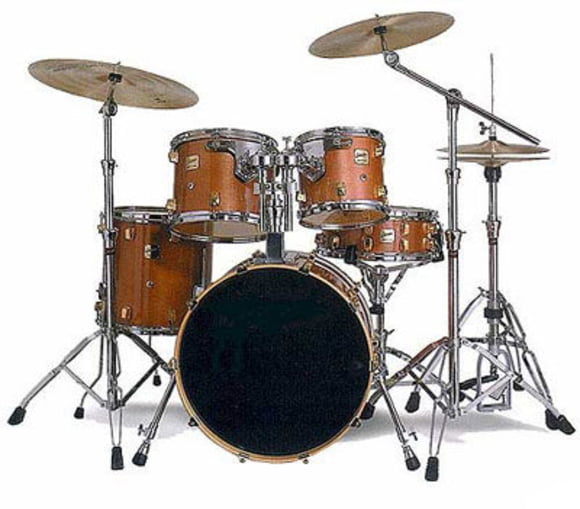2. Components of a drum kit
Roughly speaking, a drum kit is comprised of three types of components: Drums, cymbals, and the corresponding stands and mounts, the so-called „hardware“. Drums and cymbals are often regarded as two separate groups of instruments, because their roles can vary considerably depending on the style of music. The hardware is responsible for the stability and handling of the drum kit – but more on that later.
What should you look for in a drum kit for a beginner?
In contrast to most other musical instruments, a drum kit consists of many individual components, as the term suggests. This means that it is almost impossible to talk about the typical drum kit. An experienced drummer will usually have a very good idea of what he wants from his drums, and may assemble the kit from individually selected components. For beginners, it is often easier to start with a pre-configured bundle of drums, cymbals and hardware. While an adult beginner might select a modern standard configuration with a 22“ bass drum, a studio kit with a 20“ bass drum could be the way to go for children. Take a look at our online guide on drum shells for an explanation of the differences of these configurations.

Example configuration
The complete standard kit
A modern standard kit typically consists of the following components (the sizes may vary slightly):
- 10" x 7" Tom-tom (including drum heads)
- 12" x 8" Tom-tom (incl. heads)
- 2 Tom holders or 1 double tom holder
- 16" x 16" Floor tom (incl. heads)
- 22" x 18" Bass drum (incl. heads)
- Bass drum pedal (incl. beater)
- Hi-hat stand
- 14" Hi-hat (top and bottom cymbals)
- Snare stand
- 14" x 5.5" Snare drum (including heads and snare drum wires / strainer)
- Straight cymbal stand
- 20" Ride cymbal
- Boom cymbal stand
- 16" Crash cymbal
- Drum stool ("throne")
- Drum sticks
Look closely while comparing the descriptions. While many complete drum kits include the drum shells and hardware (i.e. snare stand, cymbal stands, Hi-hat stand, tom holders and bass drum pedal), cymbals are not normally included, neither is a drum throne and sticks. These items must be purchased separately. Also make sure to buy plenty of drum sticks – you'll soon need more than the initial pair!
Let's take a look at the individual components of the drum kit.



